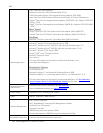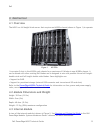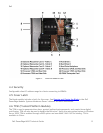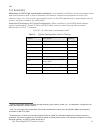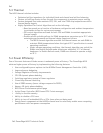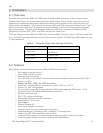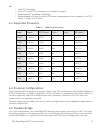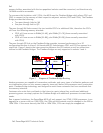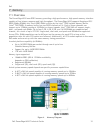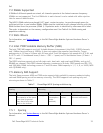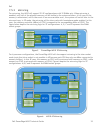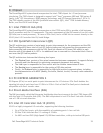
Dell
Dell PowerEdge M910 Technical Guide 19
• Intel
®
64 Technology
• Intel
®
VT‐x and VT‐d Technology for virtualization support
• Enhanced Intel
®
SpeedStep Technology
• Demand‐based switching for active CPU power management as well as support for ACPI P‐
States, C‐States, and T-States
6.3 Supported Processors
Table 6. Supported Processors
Model
Speed
TDP Power
Cache
Cores
QPI Speed
X7560
2.26GHz
130W
24M
8
6.4GT/s
X7542
2.66GHz
130W
18M
6
5.86GT/s
X6550
2.00GHz
130W
18M
8
6.4GT/s
E7540
2.00GHz
105W
18M
6
6.4GT/s
E6540
2.00GHz
105W
18M
6
6.4GT/s
E6510
1.73GHz
105W
12M
4
4.8GT/s
L7555
1.86GHz
95W
24M
8
5.86GT/s
L7545
1.86GHz
95W
18M
6
5.86GT/s
E7520
1.86GHz
95W
18M
4
4.8GT/s
6.4 Processor Configurations
The PowerEdge M910 is designed to support either a dual CPU configuration with FlexMem Bridge or a
4 CPU configuration. In either configuration, all IO and memory is available in the system. While not
formally supported, single CPU configurations with a processor installed in CPU1 will allow the
system to boot for diagnostic purposes.
The Intel Xeon processor 6500 series is for 2-socket configurations only and cannot be upgraded to a
4-socket configuration.
6.5 FlexMem Bridge
In a 4-CPU configuration, the PowerEdge M910 uses only one memory controller per CPU. This single
controller connects to two memory buffers via Intel SMI links. Each memory buffer in turn connects
to four DDR3 DIMMs. In a typical Intel Xeon processor 6500/7500 series configuration, only the



